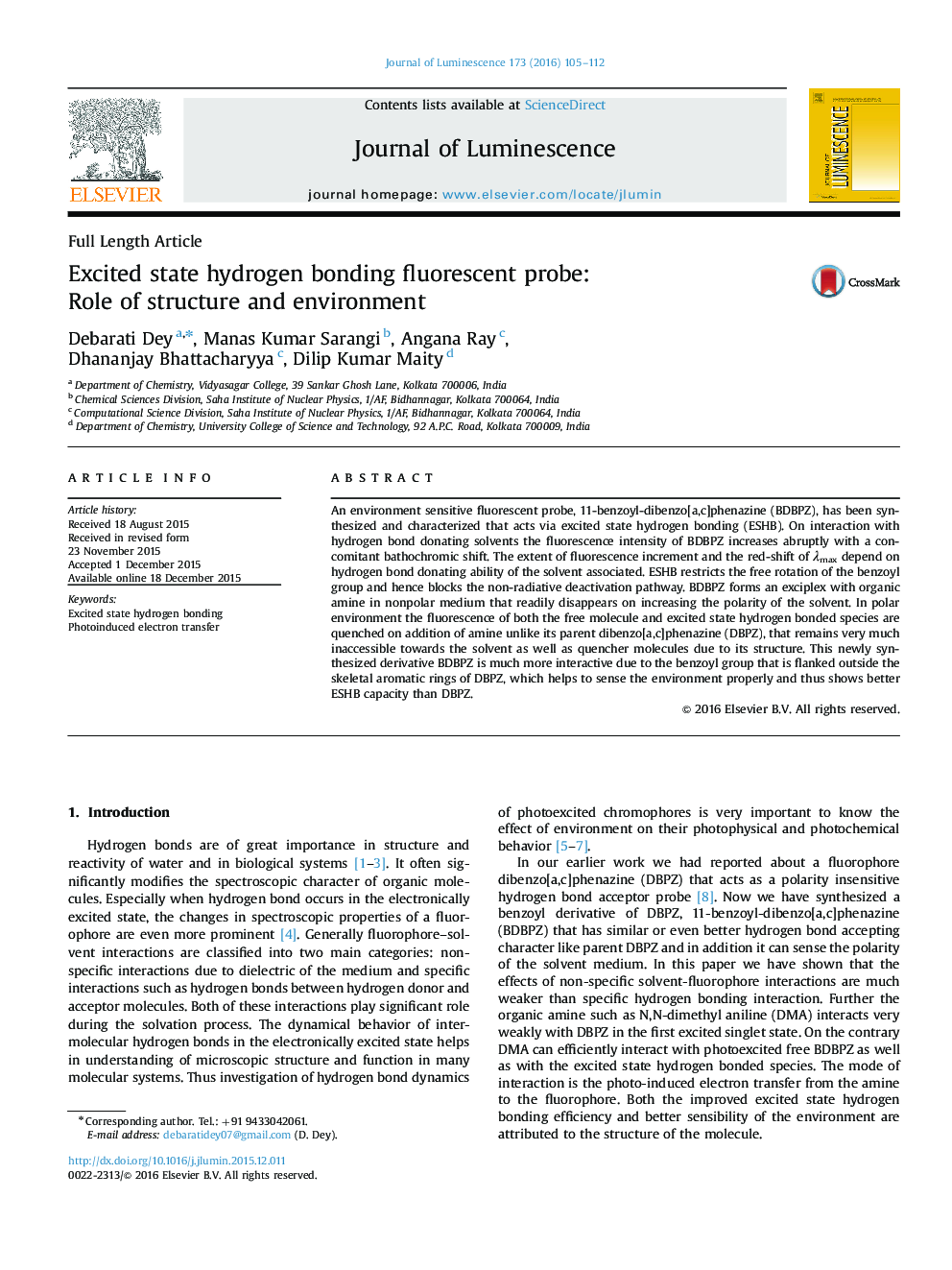| Article ID | Journal | Published Year | Pages | File Type |
|---|---|---|---|---|
| 5398512 | Journal of Luminescence | 2016 | 8 Pages |
Abstract
An environment sensitive fluorescent probe, 11-benzoyl-dibenzo[a,c]phenazine (BDBPZ), has been synthesized and characterized that acts via excited state hydrogen bonding (ESHB). On interaction with hydrogen bond donating solvents the fluorescence intensity of BDBPZ increases abruptly with a concomitant bathochromic shift. The extent of fluorescence increment and the red-shift of λmax depend on hydrogen bond donating ability of the solvent associated. ESHB restricts the free rotation of the benzoyl group and hence blocks the non-radiative deactivation pathway. BDBPZ forms an exciplex with organic amine in nonpolar medium that readily disappears on increasing the polarity of the solvent. In polar environment the fluorescence of both the free molecule and excited state hydrogen bonded species are quenched on addition of amine unlike its parent dibenzo[a,c]phenazine (DBPZ), that remains very much inaccessible towards the solvent as well as quencher molecules due to its structure. This newly synthesized derivative BDBPZ is much more interactive due to the benzoyl group that is flanked outside the skeletal aromatic rings of DBPZ, which helps to sense the environment properly and thus shows better ESHB capacity than DBPZ.
Keywords
Related Topics
Physical Sciences and Engineering
Chemistry
Physical and Theoretical Chemistry
Authors
Debarati Dey, Manas Kumar Sarangi, Angana Ray, Dhananjay Bhattacharyya, Dilip Kumar Maity,
